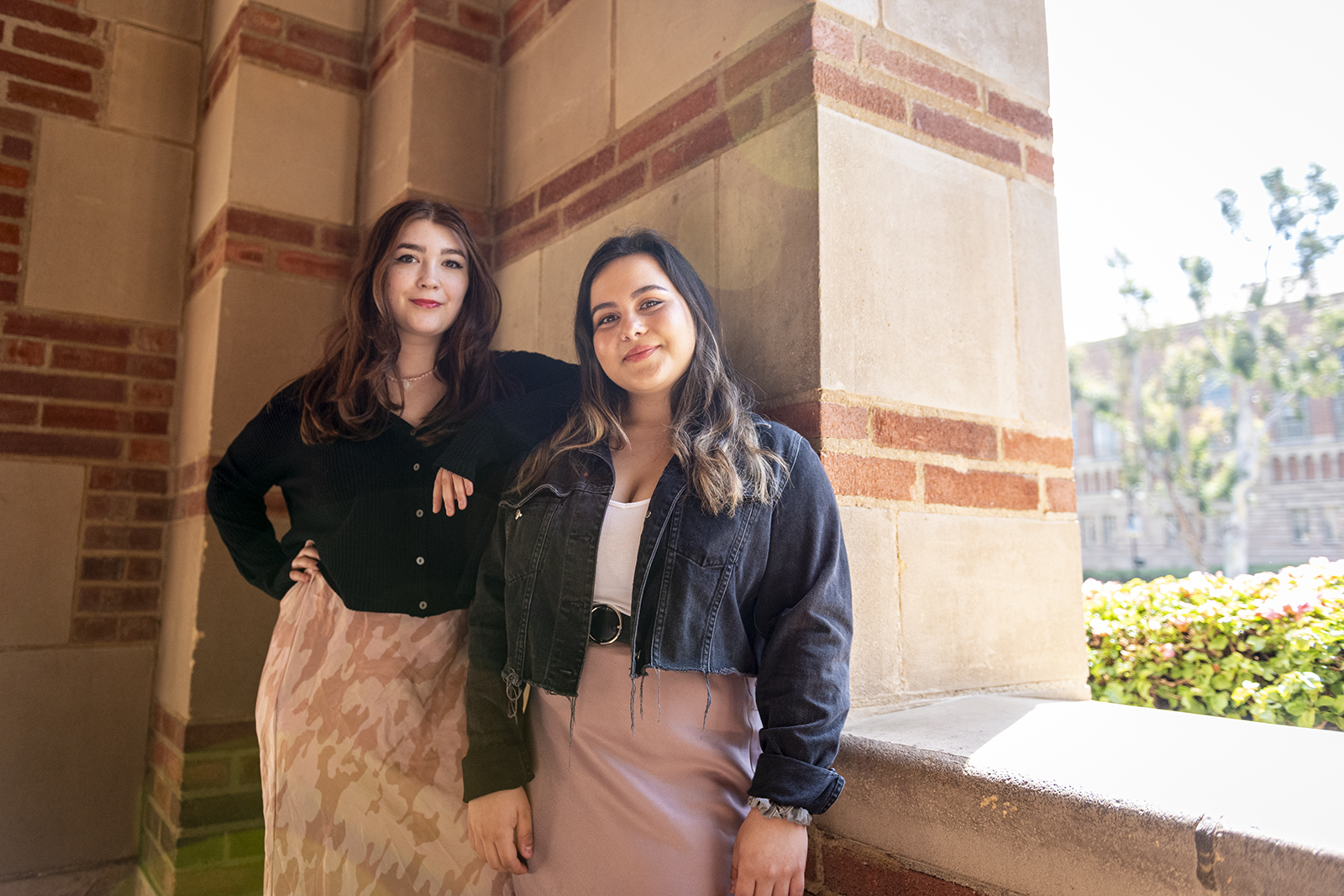HART at UCLA helps students master the art of destressing through creative processes

Elizabeth Reichner, a second-year art student, and Paige Shannon, a second-year music and industry history student, work together as a part of the club Healing through Art. They said the club works to give students an alternative option to learn ways to improve their mental health through education and creating art. (Kanishka Mehra/Assistant Photo editor)
By Julie Lee
March 5, 2020 10:27 p.m.
Watercolor painting was one of the few ways Elizabeth Reichner could bond with her sister.
The creative process of art is widely known to nurture emotional growth – a concept the second-year art student wanted to explore at UCLA by forming the club Healing through Art. This interest grew even more last spring, when Reichner’s sister was diagnosed with Cushing’s disease. The illness affected her sister’s heart rate, she said, making it difficult for them to interact outside of a calm environment. One of the ways they coped with this obstacle was by watercolor painting together, Reichner said.
“Her heart rate was 140 when she was resting in bed. … It was very difficult to even talk to her without her being at risk of having a heart attack,” Reichner said. “But when I visited her in the hospital, I would bring watercolor supplies and paper, and we would both paint and not speak. It would lower her heart rate and helped us be together in the same room.”
[Related: Graduate student aims to inspire activism by uniting art, science in exhibit]
Reichner said she will never forget how beneficial creating art was for her sister. Witnessing how art helped her sister allowed Reichner to recognize that the medium could help individuals living with anxiety and depression, or those navigating their way through difficult situations such as her own. HART aims to provide this calm environment for UCLA students, especially as other clubs might not be well known or accessible to everyone, she said.
“As a new club, the two main things that are most important to us are accessibility and awareness about mental health,” Reichner said.
On top of acknowledging the gaps within these self-care organizations, members of HART recognize the limitations of counseling centers, therapy and other services provided by UCLA. Second-year neuroscience student Michelle Kim, who is currently applying to become vice president of the club, said these resources limit the time students have with professionals.
Because of these constraints, HART aims to eliminate the burden of time and financial restraints, allowing students to feel heard and welcome within a community of others who are there for similar reasons, Reichner said. Existing organizations and programs may not be accessible to every student on campus, Kim said.
“Some of the resources at school that are supposed to be geared toward mental health and helping people who have anxiety or depression aren’t exactly the best,” Kim said. “For example, there are a certain amount of appointments that you are limited to, and you have to pay after that.”
Although creating different forms of art is a major focus in the club, Reichner said it is especially important to incorporate education about every avenue of mental health. Such dual focus will help the club’s members work toward improvement, as they will possess the tools necessary to cope with difficult emotions in the future, she said.
To do so, Reichner said she hopes to implement mental health education into each weekly meeting or event by focusing on specific topics in workshops. More importantly, Reichner said she wants to invite mental health professionals to help provide further guidance for the club’s members. In addition to these guest speakers, Reichner said meetings would include several activity stations where the professional’s tips could be put in action. These activity stations would include step-by-step art projects, as well as free time to create anything participants want.
“We want to focus on educating others about how to help themselves and how to help others while doing an activity together,” Reichner said. “Of course, it would be great to have members of the club go home with something that they created, but I want to make sure they go home with something learned as well.”
[Related: Stress Less: Painting can help students brush up on how to relax from school life]
Second-year music history and industry student Paige Shannon, who is applying to become a member of the club’s executive board, became interested in HART because of her personal experiences with art therapy. She uses music as her preferred outlet, with songwriting preventing her from bottling in all of her emotions. Writing her thoughts out on paper allowed her to feel relief. Shannon said she believes art is the perfect vehicle for exercising self-reflection without being judged.
Although HART focuses on a niche group of people and explores one of the many ways students can cope with difficult situations, the club welcomes anyone interested in mental health awareness, Shannon said. The club hopes to create a space wherein students can destress within a community of like-minded members with the incorporation of both awareness and artistic activities.
“You can create something and still feel the same satisfaction and emotional release from it without expecting to be the next Picasso,” Shannon said. “Especially on a college campus where people are very competitive and stressed, taking a moment away from that to sit with yourself and reflect can teach you a lot.”

